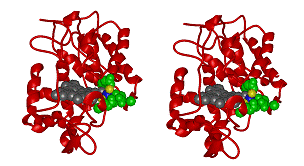 |
Complex Fluids and Nanomaterials Research Group Prof. S. Ramakrishnan, FAMU-FSU College of Engineering |
 |
 |
Particle Based Ultrafiltration Membranes for Biological Separations The aim is to fabricate ultrafiltration membranes from colloidal particles with pore sizes in the nanometer range for filtration of biological molecules such as proteins. It has been recently shown in our group that membranes formed from colloidal particles with pore sizes greater than 50 nm are easier to fabricate, have narrower pore size distribuitions and higher water fluxes than commercially available membranes. The challenge is to extend this technique to the synthesis of ultrafiltration membranes.
|
|
Continuous Enzymatic Process for Biomass Conversion to Energy The intent of this work is to demonstrate that it is technologically and economically feasible to process agricultural residues using twin screw extrusion technology to dissolve, react and saccharify the biomass to energy related byproducts in an integrated single process. The focus will be on agricultural residues that are accumulated at a potential processing site for production of a different primary product. The agricultural residues considered are bagasse (the cellulosic residue from sugar cane processing) and filter cake, draff (particularly the residue from grain processed for alcoholic spirits), wood wastes, and biomass residue from food processing. The supporting companies involved will be Florida Crystals Corporation for bagasse and filter cake, Bush Brothers for residue from food processing, and Brown-Forman for draff and wood wastes. This research is carried out in collaboration with Dr. J. Collier in the Department of Chemical Engineering.
|
|
Rheology of Concentrated Colloidal Suspensions and Gels
We are interested in studying the microstructure and mechanics of dense colloidal suspensions and gels. A key step in a number of process industries such as ceramics or consumer products involves the flow of dense suspensions. The suspensions need to have a high volume fraction (>0.45) but at the same time have a sufficiently low yield stress so that they can be pumped. Once the shearing is stopped, the suspensions need to recover their elastic modulus immediately. Our interests lie in understanding the effects of interparticle interactions on the resultant flow properties - Can we predict the flow properties starting from a microstructural model which takes into account particle interactions (the Naïve Mode Coupling Theory- NMCT)? This work involves collaborations with Prof. R. Leheny (Johns Hopkins University) and Prof. J. Harden (University of Ottawa) in performing state of the art X-ray photon correlation spectroscopy experiments at national laboratories in tracking the dynamics of the nanoparticles in the gel and in correlating it to the macroscopic properties as measured in a rheometer. Another area of interest in dense suspensions is in controlling suspension rheology by using particle mixtures – mixtures of particles with different interactions (attractive and repulsive particles) and particles of different sizes. The focus is on developing a model system for a systematic study of the rheological properties and in trying to predict the resultant flow properties using the recently devloped NMCT for mixtures. |
Protein Aggregation Aggregation of proteins is linked to a number of diseases, including Alzheimer’s, Parkinson’s, and type II diabetes, but it is not clear exactly how protein self-assembly leads to pathology. The most abundant and stable components of disease-associated plaques are amyloid fibrils, which are long nanofibers composed mostly of b-sheets. Recent research on amyloid fibril structure has revealed the presence of multiple distinct yet energetically similar pathways to amyloid formation, and the possibility for a critical pathological role of transient low molecular weight oligomers of protein molecules. We are investigating the mechanisms of aggregation of the Alzheimer’s b-amyloid peptide (Ab) using methods from colloid and polymer science, including light scattering, QCM, and rheology. Information on transient processes in protein self-assembly will be complemented by structural characterization of stable aggregates by electron microscopy and solid state NMR in collaboration with the Paravastu lab.
|





